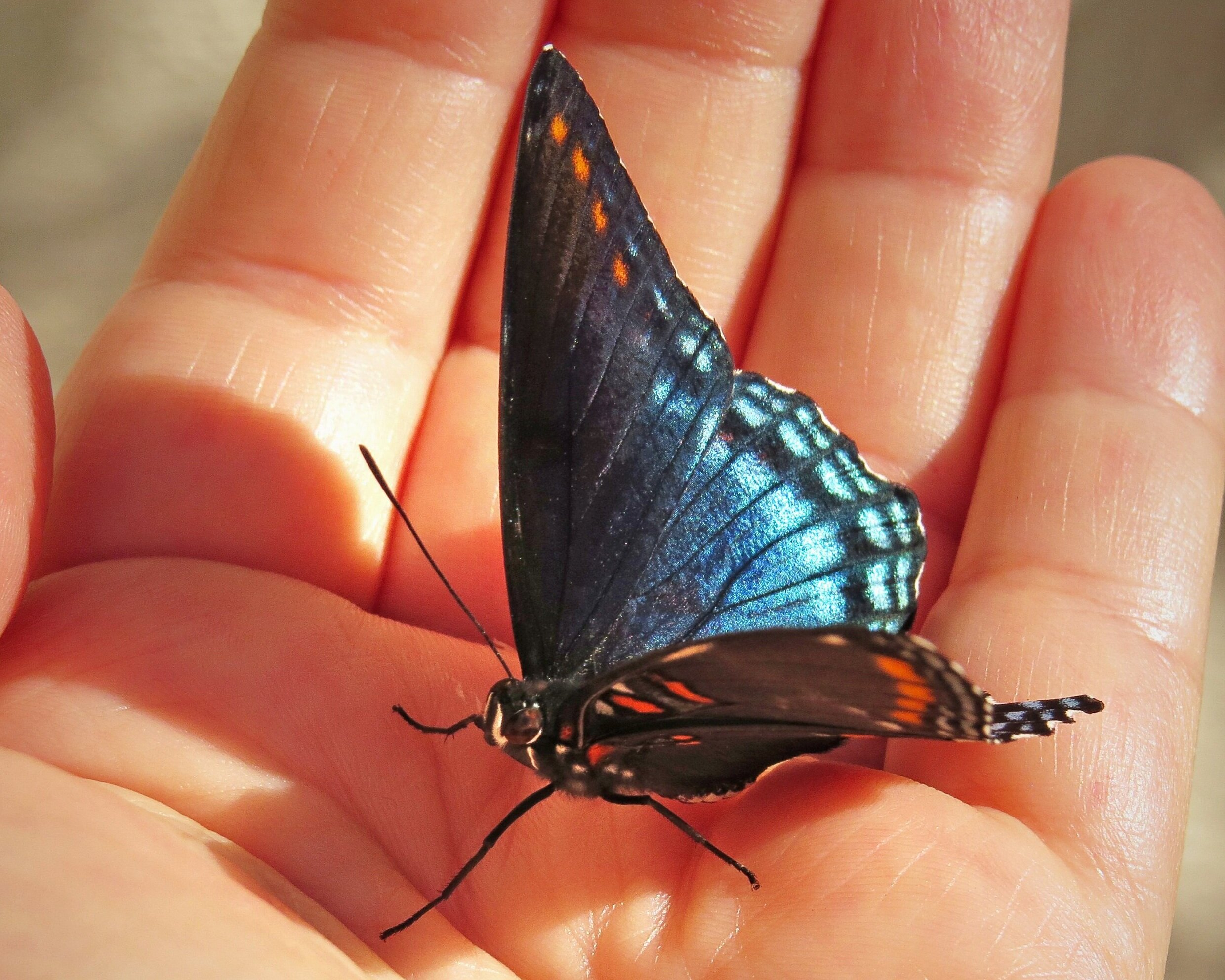The Secret Lives of Caterpillars, Part One
Red-spotted Purple Butterfly
Rather than rake leaves, I recently spent some time poking around one of my willow trees where I had seen Red-spotted Purple butterflies this past September. I immediately noticed many leaves with frass chains––a small leaf vein at the tip of a nibbled willow leaf decorated with caterpillar frass, which is just a fancy name for caterpillar poop. Newly hatched Red-spotted Purple caterpillars spend the early days of their lives eating away at the tip of the leaf on which they hatched. The leaf midrib is carefully left uneaten, serving as a path for the caterpillar to pace back and forth on.
Red-spotted Purple caterpillar shuffling down the poop highway
Eat some leaf, crawl on back down to the tip of the leaf rib, repeat. Along the way, weave your caterpillar dung onto the leaf rib, making a poop highway to walk back and forth on. That’s what these caterpillars are programmed to do. Relaxing at the end of a long string of poop is how these very tiny caterpillars avoid ants and other crawling predators.
During the summer, the caterpillars of Red-spotted Purple butterflies complete their entire lifecycle––from egg to caterpillar, chrysalis, and butterfly––over the course of around four weeks. In the fall these gorgeous butterflies-to-be change their strategy and spend the winter as very small caterpillars inside a leaf shelter that they create from silk they produce and wrap around leaves. The resulting shelter, called a hibernaculum, protects the small caterpillar over the cold winter months. In the spring, when tender, young willow leaves begin to emerge, the tiny caterpillars will be well positioned to have an ample food supply on their doorstep. An elegant design!
Hibernaculum leaf shelter on the right, willow leaf with frass chain on the left



